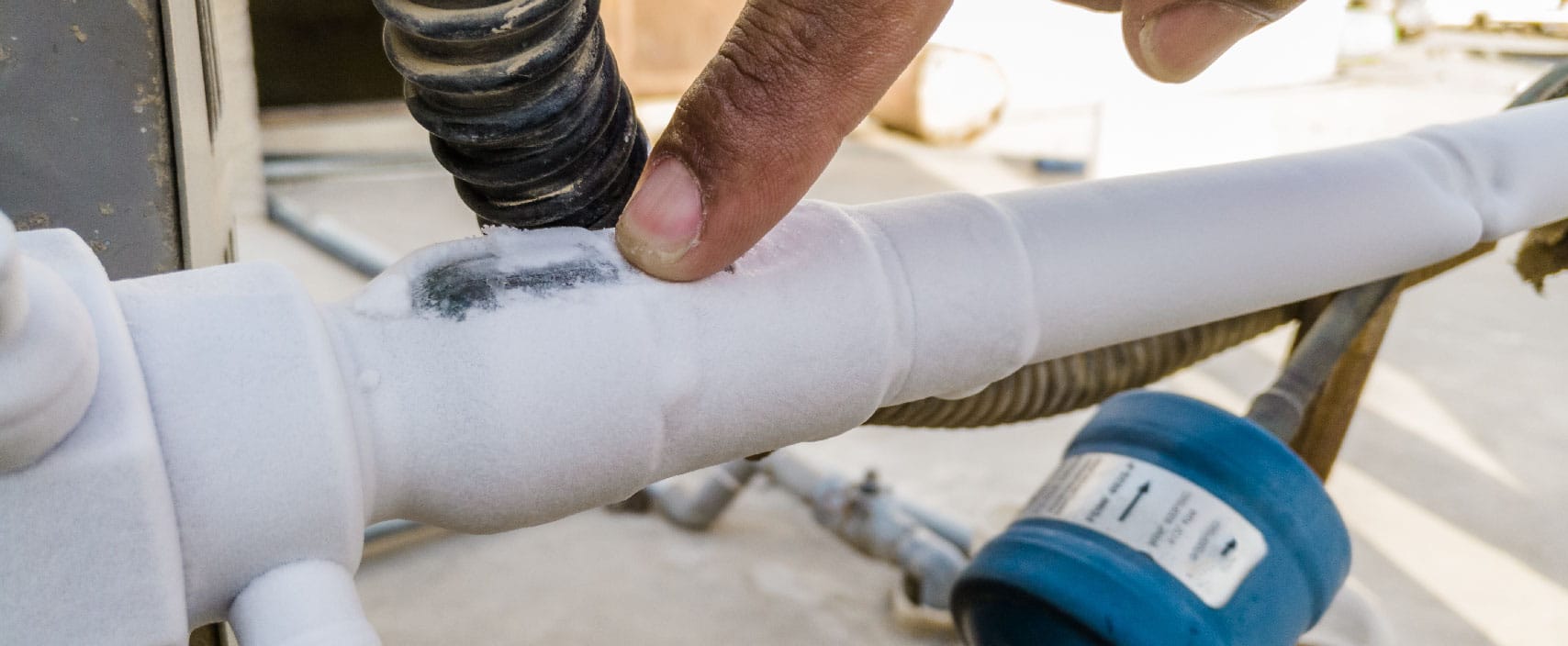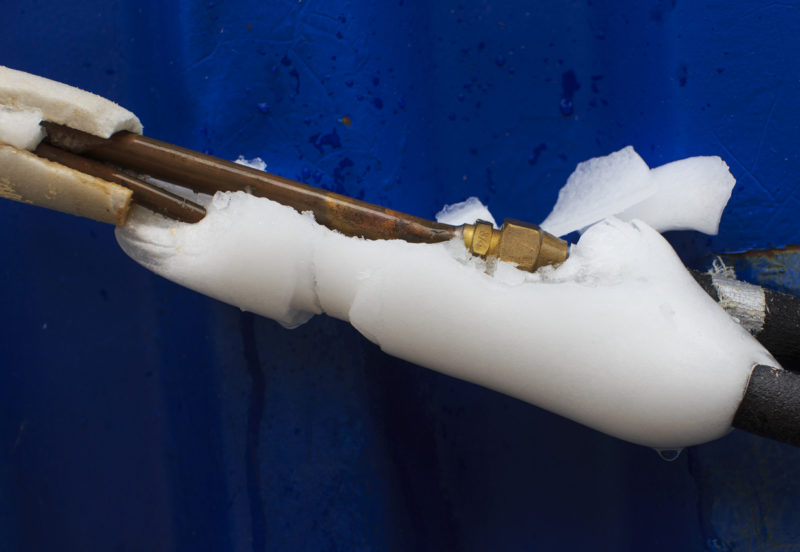Identifying a Frozen AC Pipe - Efficient Fixes for House Air Conditioning Systems
Identifying a Frozen AC Pipe - Efficient Fixes for House Air Conditioning Systems
Blog Article
What are your opinions concerning Why Is Ice On My Outside Air Conditione?

Introduction
Finding that your a/c pipeline is frozen can be concerning, specifically throughout warm summertime when you count on your ac system one of the most. Recognizing what to do in such a situation is critical to stop further damage to your air conditioning system and ensure your convenience inside.
Understanding the Causes
A number of aspects can add to the freezing of an a/c pipe. Comprehending these reasons can aid you address the concern successfully.
Absence of Airflow
One usual source of a frozen AC pipe is inadequate airflow. When the air movement over the evaporator coil is limited, it can cause the coil to go down below freezing temperature level, leading to ice development on the pipeline.
Low Refrigerant Levels
Insufficient refrigerant degrees in your AC system can also lead to a frozen pipe. Low refrigerant levels can cause the pressure in the system to go down, causing the cold of moisture on the evaporator coil.
Cold Weather Conditions
In chillier climates, freezing temperature levels outside can contribute to the cold of a/c pipes. If your AC unit is not correctly protected or if there are leakages in the ductwork, cool air can infiltrate the system, triggering the pipe to freeze.
Dirty Air Filters
Dirty or blocked air filters can limit air movement in your air conditioning system, causing different concerns, consisting of a frozen pipe. It's necessary to change or clean your air filters frequently to make sure proper air flow and avoid ice buildup.
Indications of a Frozen AC Pipe
Recognizing the indications of a frozen air conditioner pipe is critical for punctual activity.
Reduced Airflow
If you discover a considerable reduction in air movement from your vents, it might show a frozen pipeline.
Ice Buildup on the Pipe
Noticeable ice accumulation on the cooling agent line or the evaporator coil is a clear indication of a frozen a/c pipe.
Odd Sounds from the Unit
Uncommon sounds, such as hissing or bubbling, originating from your a/c system can indicate that there's ice existing on the pipe.
Immediate Actions to Take
When faced with a frozen air conditioner pipeline, it's important to act promptly to avoid further damages to your cooling system.
Turning off the a/c
The first step is to turn off your air conditioner to prevent the system from running and intensifying the problem.
Looking for Blockages
Examine the area around the indoor device for any type of blockages that might be blocking airflow, such as furnishings or curtains.
Defrosting the Pipe
You can make use of mild methods like positioning towels soaked in cozy water around the frozen pipe to help thaw it gradually.
Preventive Measures
Taking safety nets can aid stay clear of future incidents of an icy a/c pipeline.
Routine Maintenance Checks
Schedule regular upkeep get in touch with a specialist HVAC professional to make sure that your air conditioning system is running successfully.
Altering Air Filters
Frequently change or clean your air filters to prevent air movement restrictions and maintain ideal performance.
Shielding Exposed Pipes
If your air conditioning pipelines are exposed to chilly temperature levels, think about insulating them to avoid cold throughout winter months.
Seeking Professional Help
If DIY techniques fall short to deal with the concern or if you're unsure about exactly how to continue, it's best to seek support from a certified HVAC professional.
When DIY Methods Fail
If your attempts to thaw the pipe or address other issues are unsuccessful, it's time to hire an expert.
Significance of Hiring a Professional HVAC Technician
A certified HVAC technician has the know-how and devices required to detect and fix problems with your air conditioning system securely and efficiently.
Verdict
Handling an icy a/c pipeline can be an aggravating experience, but understanding just how to respond can assist minimize damages and bring back convenience to your home. By comprehending the causes, acknowledging the signs, and taking timely action, you can effectively deal with the issue and stop future events.
What to Do If Your AC Line Is Frozen
Make Sure All Supply and Return Air Vents Are Open
If you notice problems with airflow, the first thing you should do is check your supply and return vents. Supply vents distribute clean, conditioned air throughout your home. As this air becomes stale, it’s pulled into the return vent, where it’s reconditioned before being sent back out through the supply vent.
When these vents are closed, air won’t flow in the home. Before examining your AC, check the vents in every room and ensure they’re all open.
Check for a Dirty Air Filter
Another possible cause of limited airflow is a dirty air filter. Your air conditioner’s filters catch elements you don’t want to breathe in, such as dirt and dust. Over time, filters can become clogged, ultimately blocking air from flowing in and out. The lack of airflow can then cause the entire coil to freeze and will completely restrict any air from moving through it. The AC may need to be powered off for one to two days to allow the coil to thaw after replacing the filter to allow proper functioning of the unit. This debris can also accumulate on your AC’s evaporator coil, requiring a more serious repair. In general, air filters should be cleaned regularly (about every two weeks).
Assess Your Outdoor Unit
In addition to checking your AC, assessing the outdoor unit is a good idea. Also known as the condensing unit, it works with your interior unit to release heat outside. An issue with the outdoor unit can result in rising internal temperatures.
Overgrown Shrubs or Clogged Leaves
From leaves and twigs to shrubs and debris, there’s no shortage of outdoor elements that can accumulate around your condensing unit. When these elements get lodged inside the unit, they can block airflow. Fortunately, removing the blockage can solve the problem.
Sounds of a Broken Fan
Shrubs and leaves aren’t the only things that can impede your outdoor unit’s airflow. If the fan is broken, the unit won’t be able to properly get rid of heat — which means the internal temperature won’t go down. First, make sure the fan is spinning. If it is, check for the following sounds of a broken fan:
Buzzing Rattling Screeching Hissing Clicking Preventative Measures
Nobody wants to deal with a frozen AC line. In addition to causing problems with your air conditioner, they require professional repairs. On the bright side, there are preventative measures you can take to help ensure this issue doesn’t arise in the first place.
https://www.coopergreenteam.com/blog/what-to-do-if-ac-line-frozen

We were brought to that article about Air Conditioner Frozen? How To Fix your Frozen AC Line from someone on a different website. Do you know about somebody who is inquisitive about Why Is Ice On My Outside Air Conditione? Why not share it. I appreciate reading our article about How can I fix an air conditioner’s frozen pipe?.
Set Up An Appointment Report this page